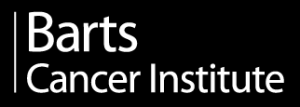January 24
2013
Biodesign Auditorium
727 E. Tyler St. Tempe
AZ 85287
The work from Dr. Bissell’s laboratory in the last three decades has led a field that is now central to the current recognition and acceptance of the importance of context/microenvironment and extracellular matrix (ECM) in regulation of gene expression,; and underscored the relationship of the ECM and microenvironment to the plasticity of both the differentiated state and tumors.
Dr. Bissell will discuss how she and her colleagues have developed and use 3-dimensional models of normal mammary gland and mammary tumors from both mice and humans to understand breast cancer. She will present recent work on the seminal role of tissue and organ architecture in cancer research, specifically regulation of tissue specificity and plasticity. Dr. Bissell will also discuss work with newer, more complex models developed to better understand metastasis and dormancy.
She will show a mechanism to underscore the model of dynamic reciprocity and how the ECM and basement membrane signal to the nucleus, via intricate interactions with nuclear actin to provide cell and tissue quiescence; discoveries of unique functions for MMPs (a possible explanation for why anti-MMP therapies failed; and a recent discovery of a novel movement through kinetic imaging of how a unit of tissue function in the mammary gland (an acinus) is formed in the normal breast, lost in malignancy and reformed by controlling the microenvironment and restoring tissue context and architecture. Dr. Bissell will discuss why these concepts and models have profound implications for prognosis, drug resistance and therapy of cancer.
Jointly sponsored by CASI(http://casi.asu.edu) and the Biodesign Institute(http://biodesign.asu.edu) and the PSOC (http://cancer-insights.rtd.asu.edu)



